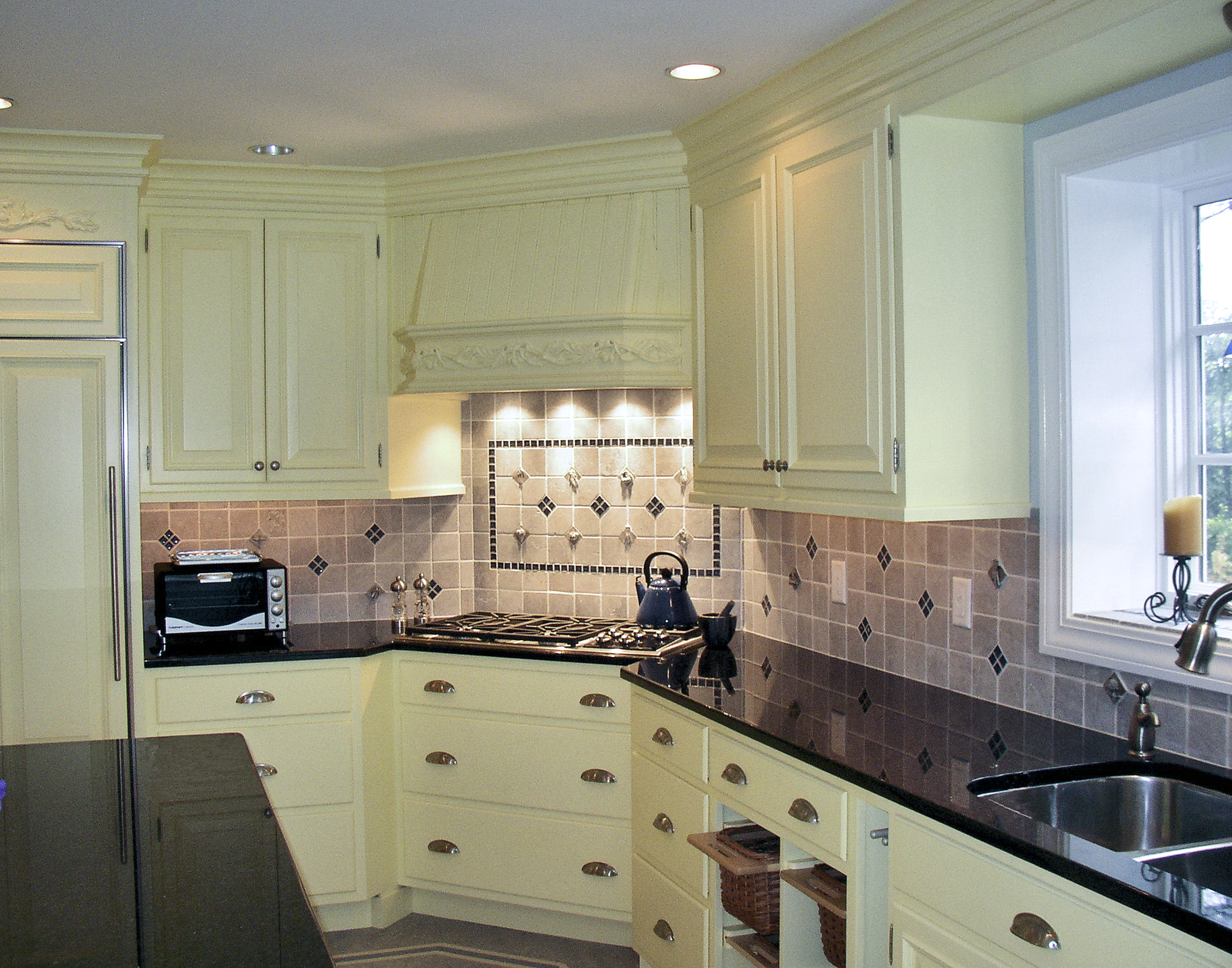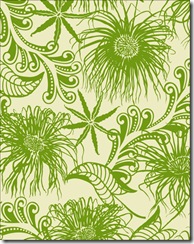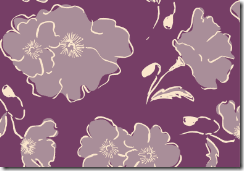Posts in Category: eco-friendly fabrics
Eco-Friendly Interior Finishes for Kitchen and Bathroom Renovations
This past month I participated in the Hamilton Wenham Green Speaker Series which took place at the Hamilton Wenham Public Library. My focus was Eco-friendly interior finishes for kitchen and bathroom renovations. As I was preparing this presentation, it became evident that I could stand before my audience and provide them with factual information presented in a power point format or I could share my personal story of how I became interested in specifying less toxic finishes for my clients along with the facts. The later seemed to offer a more interesting venue.
I have shared in a past blog about how I became ill after moving into two of the homes we had lived in. The focus of that blog was about the outgassing of VOC’s (volatile organic compounds) when paint dries. (Smelly walls, what’s that all about? July 2009) Upon learning about VOC’s and outgassing with respect to paint, I was then interested to find out what other items may have contributed to my illness. Through the process of Google searches, speaking with experts in the field of Green Design and reading accounts of similar chemical sensitivities, I was on my way to learning how to create healthier environments for myself as well as my clients.
The first home my husband and I purchased was in Lynn, MA in the late 1980’s. It was a Victorian that had been gutted and was in the process of being renovated when we first saw it. Not only did it have fresh paint on the walls, but there was new nylon carpeting put down with toxic adhesives, restored wood flooring with polyurethane, plastic laminate kitchen and bath cabinets and countertops with formaldehyde and toxic glues. I was ill for 3-6 months. The doctors could not figure out what was wrong with me. Could it be sinus or neurological? They gave me medication – but I think my system eventually just adapted to the environment.
Our second home was in Georgetown, MA in the early 1990’s. It was new construction. Of course, we were excited to have a new home! What we didn’t realize was that I was going to get sick again for an extended amount of time due to the finishes applied throughout this home as well. Since it was new construction, we also had a very tight house. The only difference between this home and our previous one was instead of newly finished wood floors, we had vinyl flooring and adhesives to deal with. We had the same plastic laminate cabinets and counters, nylon carpeting on the second floor bedrooms and lots of painted walls.
In 2000 we move to Hamilton, MA. The home was a Victorian summer home that had been converted to year round living in the early 1930’s. When we moved in – nothing had been done to the interior of the house for years. There were painted plywood cabinets in the kitchen, beautiful hardwood floors throughout that had an older finish on them, the paint on the walls was several months old and there was ceramic tile on the floors of the bathrooms. I was healthy for the first time after moving into a new home! I was too busy at the time to put much thought into questioning why I wasn’t getting sick with this move. That light bulb would go off in a few years.
When I decided to begin my own interior design practice focusing on residential design, I knew that I had wanted to work with clients to provide beautiful and functional spaces for them to enjoy, but I also knew there was something more. In the beginning, I wasn’t quite sure what that was, but I trusted that eventually it would come to me. The aha moment came when I started hearing about Green Design and how it was more than just specifying sustainable products, it was also about specifying healthy products. That was it: I would learn as much as I could about how to bring healthy products into my clients homes. Not only in terms of finishes, but cleaning products, fabrics, air purifiers and humidifiers and even food. (I have been a work for share/CSA member for 8 years at Green Meadow Farms in Hamilton, MA. They share with the community organic produce/meats and lifestyle choices)
Through my interior design business, I have had the privilege of designing and working to date on two Green Kitchen renovations. Here is a listing of some of the features we were able to introduce into these spaces (they go beyond just finishes): Energy Star appliances, organic wall paint, no VOC (volatile organic compounds)paint, recycled glass/ceramic wall & floor tiles, LED (light emitting diode) for under cabinet and cove lighting, energy efficient dimmable CFL (compact fluorescent lighting) lighting, Richlite (compressed paper based) countertops, poured concrete countertops, radiant heat under the flooring, cabinetry: FSC (Forest Stewardship Council) cherry and maple cabinetry, with a water based natural finish, no VOC painted finish on office, bathroom & island cabinetry, flooring: Marmoleum, linoleum product, backsplash: reclaimed tumbled stone with recycled metal and crushed glass accent tiles.
My intention is to share the information I have gathered with my clients, friends and family. There are so many products demanding our attention, why not purchase those that are not harmful to us nor our environments. I will be posting the video recorded at the library within the coming weeks that shares more information about specific companies and their products. If you are interested in viewing it now, go to: HWCAM.org, type in Lisa Kawski, it will bring up my show, click on the title, it will show the schedule, click on WATCH NOW.
As always, if you have any questions regarding green interior finishes, please feel free to contact me design@lmkinteriorsltd.com or call (978)335-1140.
the many fabrics of our lives…..
As the weather has gotten colder these last couple of weeks, I have begun the layering ritual. Undergarments, camisole, shirt, sweater, vest… some days even a jacket. Each garment is usually made from a different type of fabric. Each having their own inherent texture and appeal. As an interior designer, I am in contact with fabric everyday on my job. Whether I am specifying fabric for upholstered pieces, draperies, pillows, or custom bedding; I get to select from a wealth of fabrics that are available. For me, anticipating going to the fabric showroom to make selections for a client is like a kid waiting for their parent to drive them to the candy store. Once I am there, I am in my own special world. One of my favorite fabric houses is Zimman’s located in downtown Lynn, MA. (www.zimmans.com) One must have an idea of what one is seeking prior to entering this institution. It can be a bit overwhelming even to a trained expert! The fabrics, trims and embellishments are on the first floor and the lower level; the second and third floors are home to amazing furnishings and light fixtures.
Since I began offering my clients “green alternatives” in the realm of interior design products, my quest to find eco-friendly and organic fabrics that have more visual interest than a burlap bag has been a steady source of internet searching. Fortunately, access to these fabrics is becoming less of a search effort and more of clicking on a book marked site for a clients’ request. Here is some of what I have learned about the availability of eco-friendly fabrics.
What makes a fabric eco-friendly?
- It may be a natural fiber like cotton, hemp or bamboo. They must have been grown without the use of pesticides in the soil for at least three years.
- If the fabric is dyed, it must be with a low-impact dye.
- Eco-friendly certification (EU-Eco label certification)
- Production adheres to fair trade practices.
- Recycled plastic is also considered to be a green fabric.
Are there enough benefits to using eco-friendly fabrics?
Organic Cotton
Benefits: Renewable, biodegradable, non-toxic, comfortable
Potential Drawbacks: often more expensive than regular cotton
Hemp
Benefits: Renewable, fast-growing, pesticide free
Potential Drawbacks: Must be imported into the United States
Bamboo
Benefits: Fast-growing, minimal pesticide usage
Potential Drawbacks: Can be expensive, imported, requires chemical bleaching
Organic Wool
Benefits: Biodegradable, renewable, warm when wet
Potential Drawbacks: Can be expensive and hard to find
Recycled Polyester
Benefits: Lowers demand for oil, less waste, warm when wet
Potential Drawbacks: Sometimes expensive; inefficient methods for obtaining quality fibers
TENCEL®/ Lyocell
Benefits: Biodegradable, comfortable, rich color, stronger than cotton
Potential Drawbacks: Chemical processing required
Soy Fiber
Benefits: Renewable, biodegradable, soft, durable
Potential Drawbacks: Usually more expensive, chemical processing required
Jute
Benefits: Biodegradable, recyclable, fast growing, versatile
Potential Drawbacks: Rough and coarse good for rugs and bags, but not clothing
Modal
Benefits: Biodegradable, rich color, very soft and absorbent
Potential Drawbacks: Requires chemical processing
(The above information provided by The Sierra Trading Post)
Here are some web-sites that I would recommend for eco-friendly fabrics:
www.oliveiratextiles.com/collection.html?id=4
And, of course, I can not neglect to mention organic/eco-friendly fabrics without referring to www.etsy.com. I found at least 10 vendors that have beautiful and affordable lines to offer. If you find yourself unsure where to look for eco-friendly fabrics, please feel free to email (design@lmkinteriorsltd.com ) or call me (978-335-1140) I would be happy to assist you.







